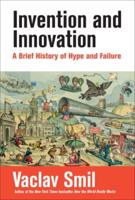Publisher's Synopsis
Diploma Thesis from the year 2007 in the subject Agrarian Studies, grade: 1,3, Christian-Albrechts-University of Kiel, 59 entries in the bibliography, language: English, abstract: The objective of this paper is to assess these most important input markets for cashmere herding. In order to do so, the markets are first described in detail followed by an assessment of problems which occur in relation to livestock herding. It is clear that any improvement in this area will require a deep understanding of how these markets operate and what obstacles will impede further development. In addition, this paper will evaluate the enforceability and appropriateness of solutions suggested by the Mongolian government and by foreign donor agencies. To support our findings, we conducted a survey of Mongolian cashmere herders who were asked what daily difficulties and major obstacles they face on their livelihoods. The survey took place in October 2006 and covered 50 herding households in five aimags2, focusing on the two provinces, Bayankhongor and Uvorkhangai, that have a high number of cashmere goats.3 Herders were selected randomly from a widely dispersed population in order to cover a variety of cases. The answers we received helped us to better understand the nature of the traditional pastoral livestock husbandry and comprehend how herders see their own situation within difficult circumstances. It is obvious, that any reform of the input markets for cashmere production should be made in close collaboration between herders and the authorities. This paper is structured as follows: First, chapter two gives an overview of the Mongolian livestock sector and the cashmere production in particular, including a small introduction of the input markets essential to cashmere herders. These input markets are examined in more detail in chapter three and four. Whereas chapter three focuses on the classic natural markets for land, water and fodder, chapter four concentrates on services like










